Waste from holiday wrapping is a big problem. It amounts to millions of pounds every year just in the United States (exponentially more when counted around the world).
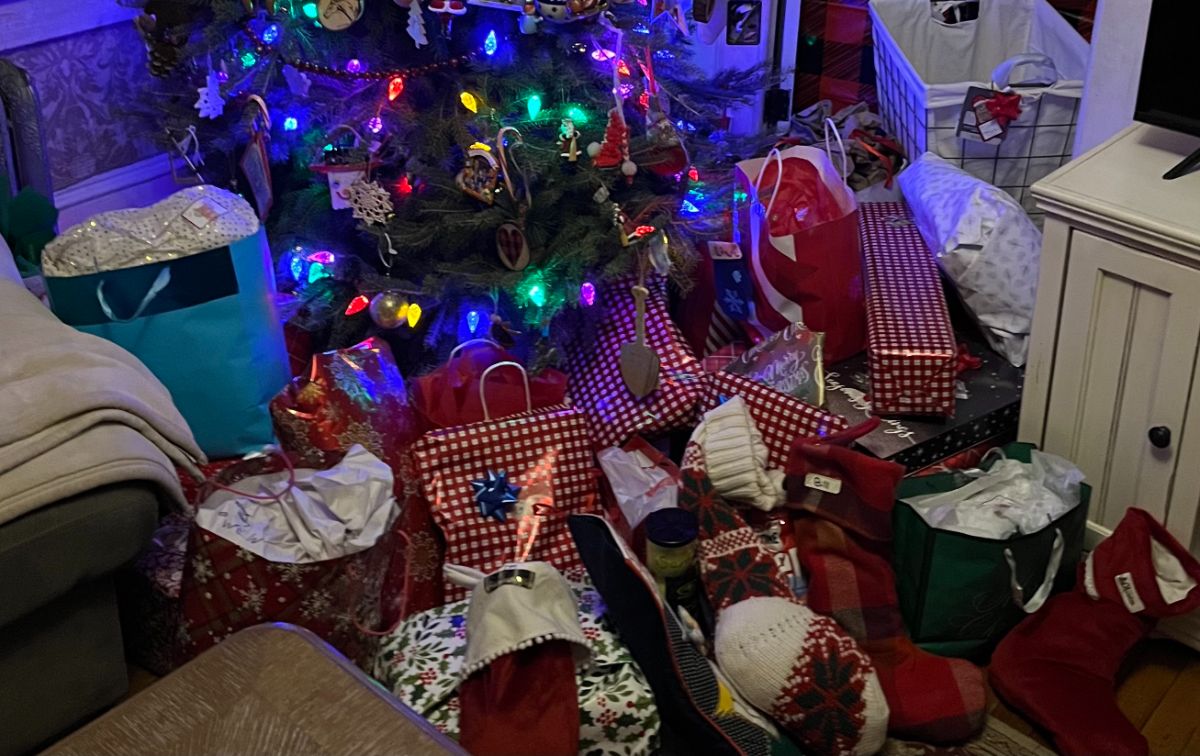
It is estimated that the holidays result in an increase of 25% in waste products going to landfills—landfills that are filling up too fast, that are ending up with trash in our environment and oceans, and that we simply need to reduce and do better.
One way we can reduce that waste is to find better uses and up-cycled uses for all the paper packaging, cardboard, and trimmings that come with packaging and gift giving.
Jump to:
- Better Uses for Holiday Trash – Top Tips!
- 1. Compost
- 2. Make seedling pots
- 3. Paper weed control
- 4. Cardboard box composting
- 5. Use for sheet mulching or creating no-till weedless garden beds
- 6. Lasagna gardening
- 7. Mulching berries, bushes, and orchard trees
- 8. Shredded paper mulch
- 9. Shred and save for storing root vegetables, fruit, tubers, and more
- 10. Mix and till to add organics, increase moisture retention, and lighten garden soils
- 11. Use string and twine for tying plants and making bundles
- 12. Line and fill raised beds
- Double-Check Before Using Paper in Your Yard or Garden
Better Uses for Holiday Trash – Top Tips!
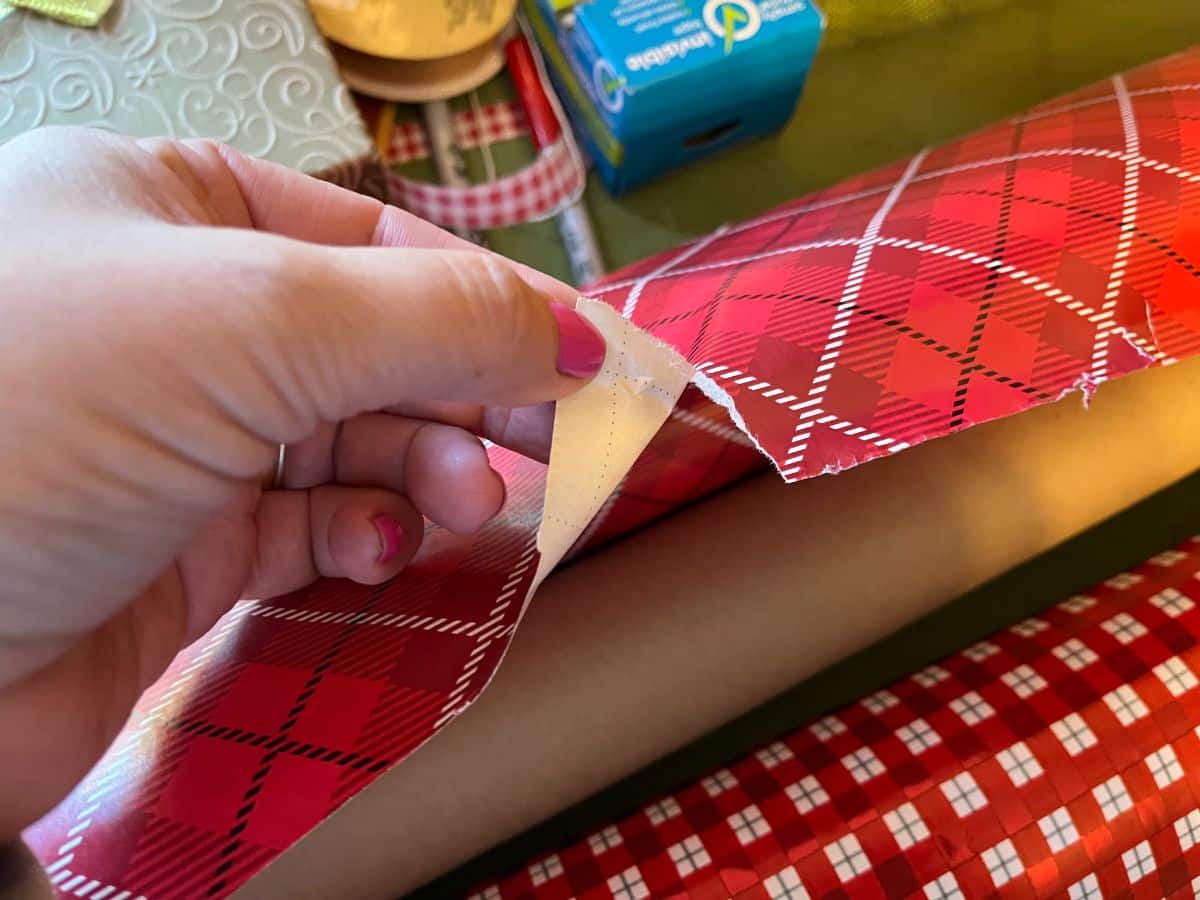
There are some very useful things that you can do with the waste that is generated from holiday celebrations, Christmas, and gift-giving.
After the frenzy is over, set aside your waste and turn it into something good—and growing!
Like the 12 Days of Christmas, we have 12 ways to make better use of Christmas waste.
Here are our top tips for how you can put your wrapping and packing waste to good use in the yard and garden:
1. Compost
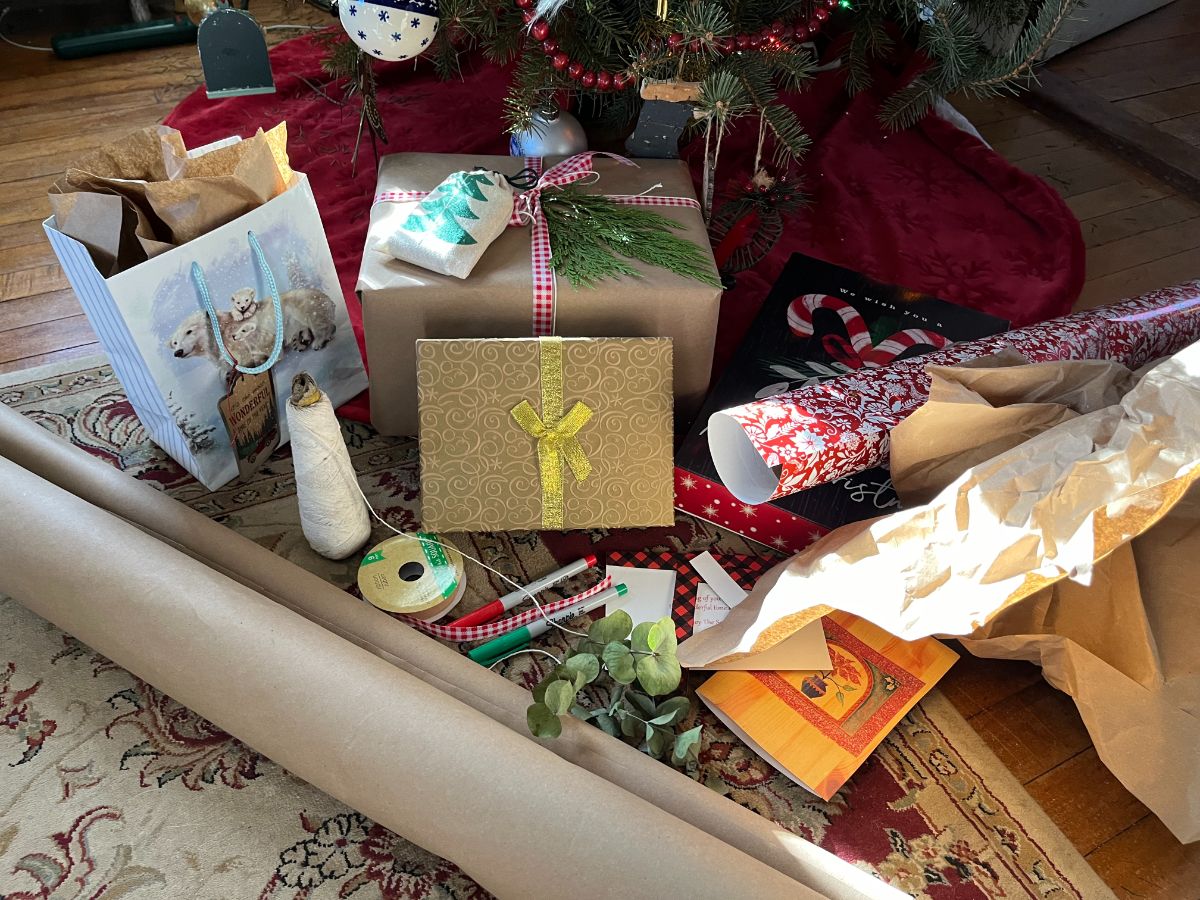
Wrapping paper is compostable if it’s not coated in anything glossy, waxy, or metallic (for more on this, see the tips at the end).
If you wrap in flat or matte-styled paper, or if you’ve opted for a more eco-friendly and reusable type like reused packing paper or Kraft paper [craft paper], then the paper is certainly able to be composted.
You can also shred and compost plain holiday cards, brown cardboard, untreated/non-coated cardboard, and all tissue paper -- as long as it doesn’t have glitter or foil inlaid into it.
If you don’t have a compost pile yet, make one! Starting a compost pile with your holiday paper and waste is an excellent way to ring in the New Year!
2. Make seedling pots

Seed starting is just around the corner. Here’s something you can do with Christmas waste that will save you money as it saves the environment from more waste—and from more plastic seed-starting pots!
You can make seedling pots out of stiff papers, several sheets of recyclable wrapping paper, or out of the hollow tubes that wrapping paper is rolled on (those leftover “swords” the child in all of us can’t resist!).
3. Paper weed control
Paper left over from wrapping and packaging can be used as weed control. Lay it out for rows and plant through it, or piece it in around perennials and plants that are growing.
Using paper as weed control instead of plastic or synthetic landscape fabrics is great because it is natural and can be left in the garden to work into the soil. This improves and adds organic material back to the soil.
It’s cheap—in this case, free! --and it won’t leave ripped-up pieces of plastic all over your yard and garden.
4. Cardboard box composting
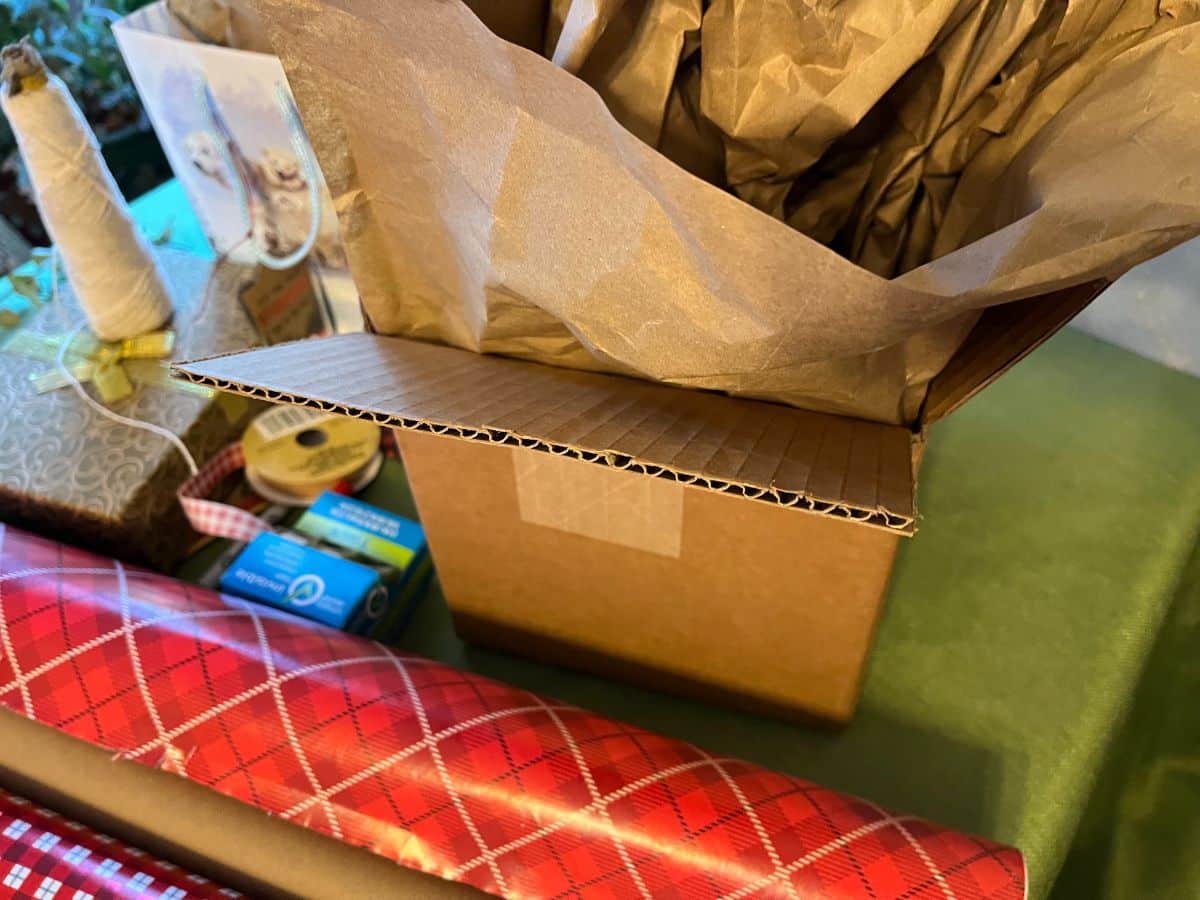
The Japanese government supported research and encouraged their citizens to waste less by creating indoor cardboard box compost systems. And yes, it really works! Done right, it’s also odor-free.
Leftover boxes from Christmas and shipping are perfect for this project. And you get compost!
5. Use for sheet mulching or creating no-till weedless garden beds
One of the easiest ways to stop weeds is by sheet mulching. The reason sheet mulching is so easy is that all you do is lay layers of paper or a sheet of cardboard over the ground where you want to stop weeds from growing through.
After laying out the cardboard or paper, you can cover it with a more decorative mulch, like wood chips. You only need a light layer of mulch (which saves money) because the sheeting will be your main barrier.
You can even do this over living weeds and grasses. The sheets will smother them, and you won’t have to worry about those weeds anymore! This is considered a form of “weedless gardening,” and it’s a great technique to use—and a great way to put your Christmas waste to good use!
Sheet mulching is perfect for building new garden beds, too. You can do it at almost any time of the year since you don’t need to till. In fact, it is easier to make a sheet-mulched garden bed in winter when the weeds have died back and aren’t in your way.
As long as there isn’t a foot of snow on the ground, you can even lay out your new garden bed after the New Year and have it all set for spring.
6. Lasagna gardening
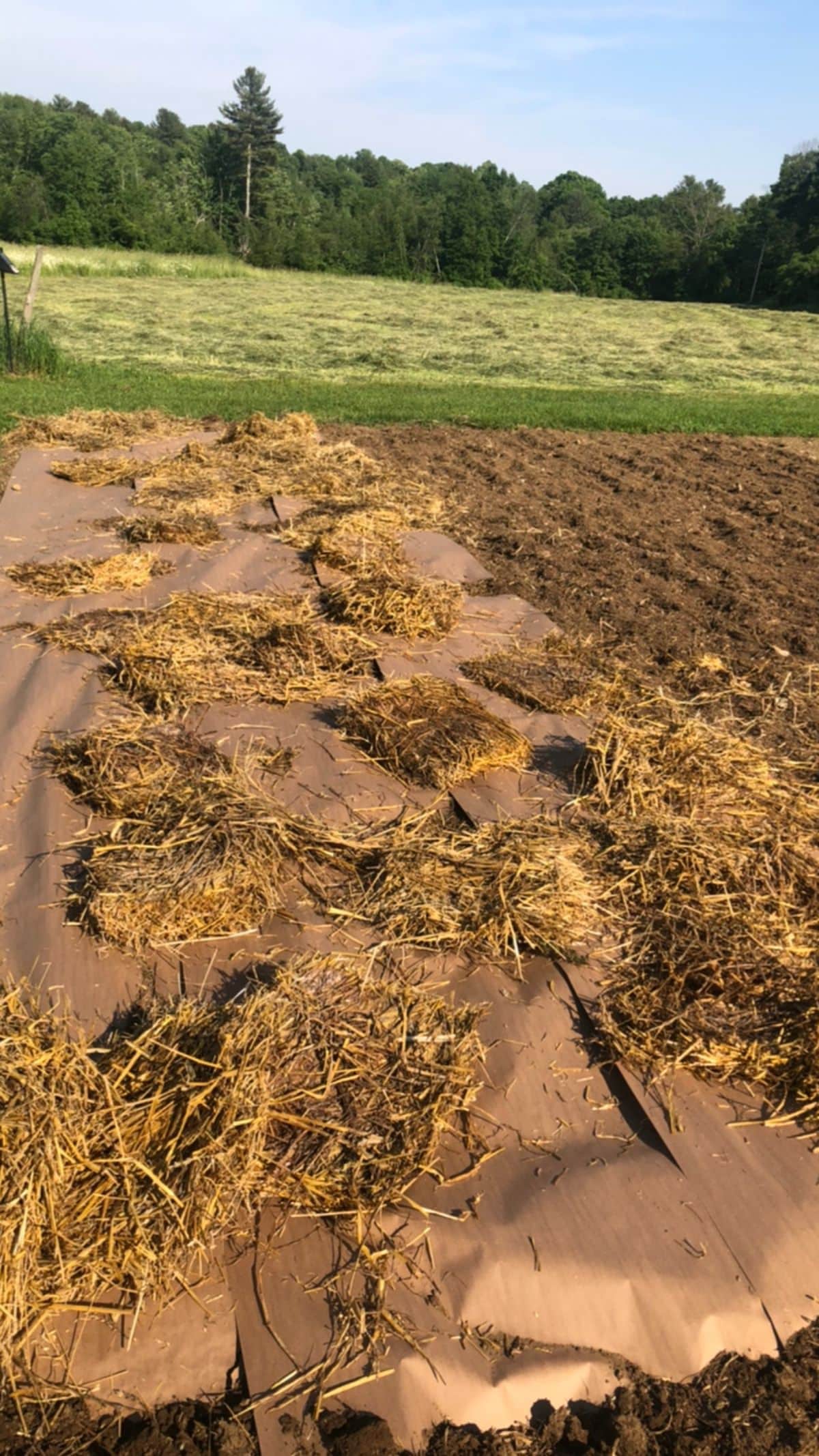
Lasagna gardening is a no-till form of gardening where you basically create compostable layers of soil and natural materials like paper, cardboard, compost, yard waste, straw, leaves, or hay.
Like sheet mulching, you can start building these layers at any time of the year when the ground is open and not covered in snow. Then, you just plant through them!
Lasagna garden beds need a lot of organic materials like cardboard or paper, so using or saving your Christmas and holiday waste for a lasagna garden is the perfect thing to do. Gifts that keep on giving!
7. Mulching berries, bushes, and orchard trees
Large and mature bushes and trees can be difficult to mulch. It’s hard ground to keep weeded, and you can’t till it up, or you’ll kill your established plants.
Using layers of paper or cardboard covered with a natural mulch is an excellent solution. Just piece the paper or cardboard around the bush or tree (leave the closest part against the trunk exposed, and don’t mulch right up to the bark).
Cover it with a final natural mulch like straw or wood chip, and never have to worry about weed competition or the hard-to-mow areas under these hardy plants again.
What’s even better is that paper and wood products (which, of course, paper and cardboard are), are good mediums for growing beneficial mycorrhizae. Mycorrhizae helps expand the surface area of roots for trees, bushes, and shrubs, and it increases the plants’ abilities to access vital nutrients, thereby increasing the production and yields of fruits and berries.
8. Shredded paper mulch
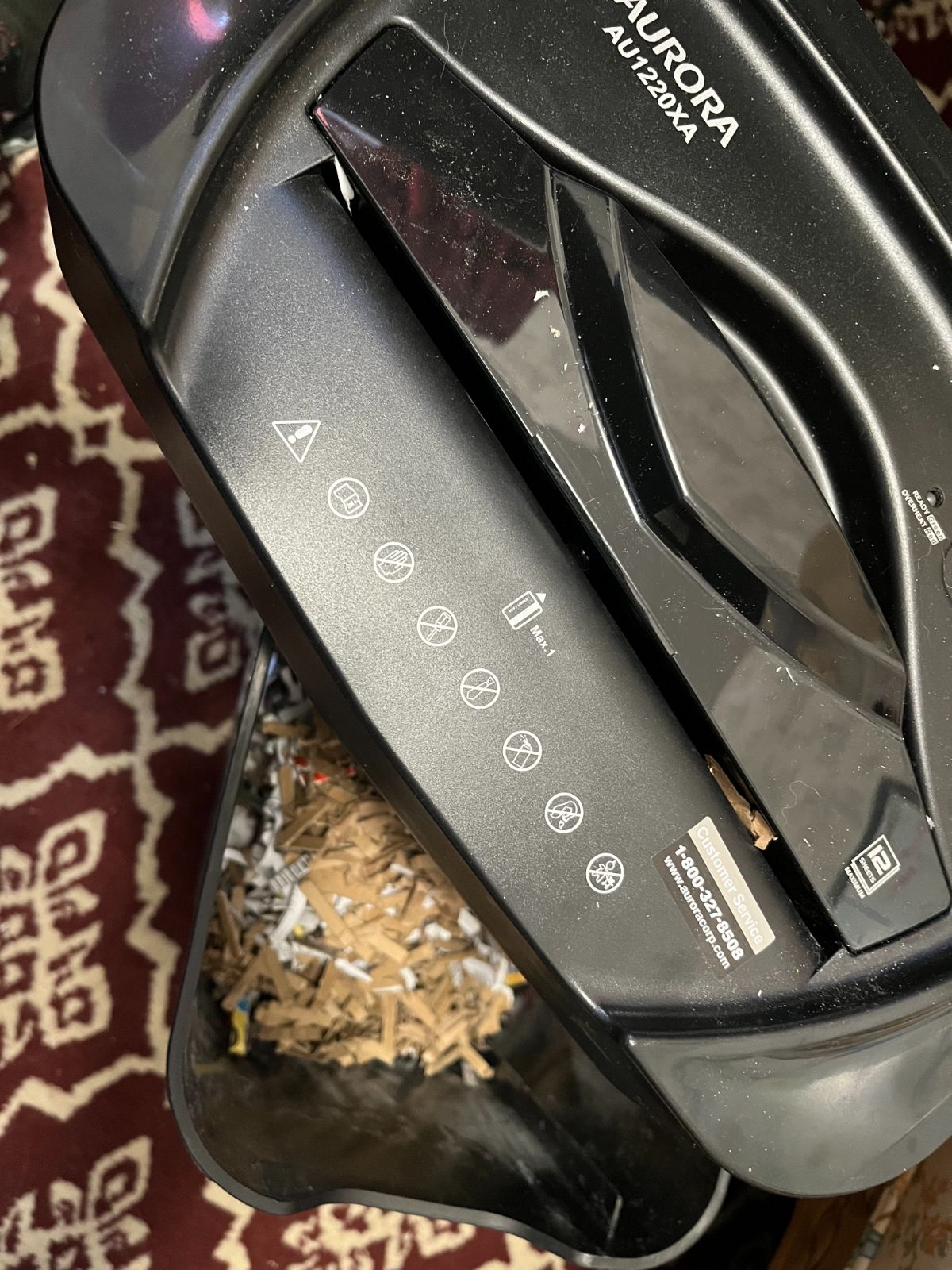
Shredded paper is also a good mulch and a good one to use if you need something looser and more flexible, or perhaps shorter-term, than sheets of heavy paper or cardboard.
Use a home office shredder to shred sections of reusable paper and cardboard (if the cardboard is thin enough to go through your shredder*). Bag it up or box it up and save it to use this spring and summer!
*Shredder manufacturers say that a shredder that is rated for at least 12 pieces of paper at one time can be used for cardboard, though an 18-sheet paper shredder is more highly recommended.
9. Shred and save for storing root vegetables, fruit, tubers, and more
There are other ways to up-cycle shredded holiday wrapping. One way is to use it in place of straw or sawdust for storing garden items.
For example, root vegetables and fruits like apples keep better if they are wrapped or buried in paper. Shredded paper is perfect for this because it absorbs excess moisture while also holding in some moisture, which is important so the produce doesn’t dry out too much.
Paper layers also keep space between individual pieces of fruit or vegetables, and that helps reduce rot, pathogen transfer, and cross-contamination.
Tubers that you have to dig and store inside over winter will also do well in up-cycled paper shreds (for much the same storage reasons).
10. Mix and till to add organics, increase moisture retention, and lighten garden soils
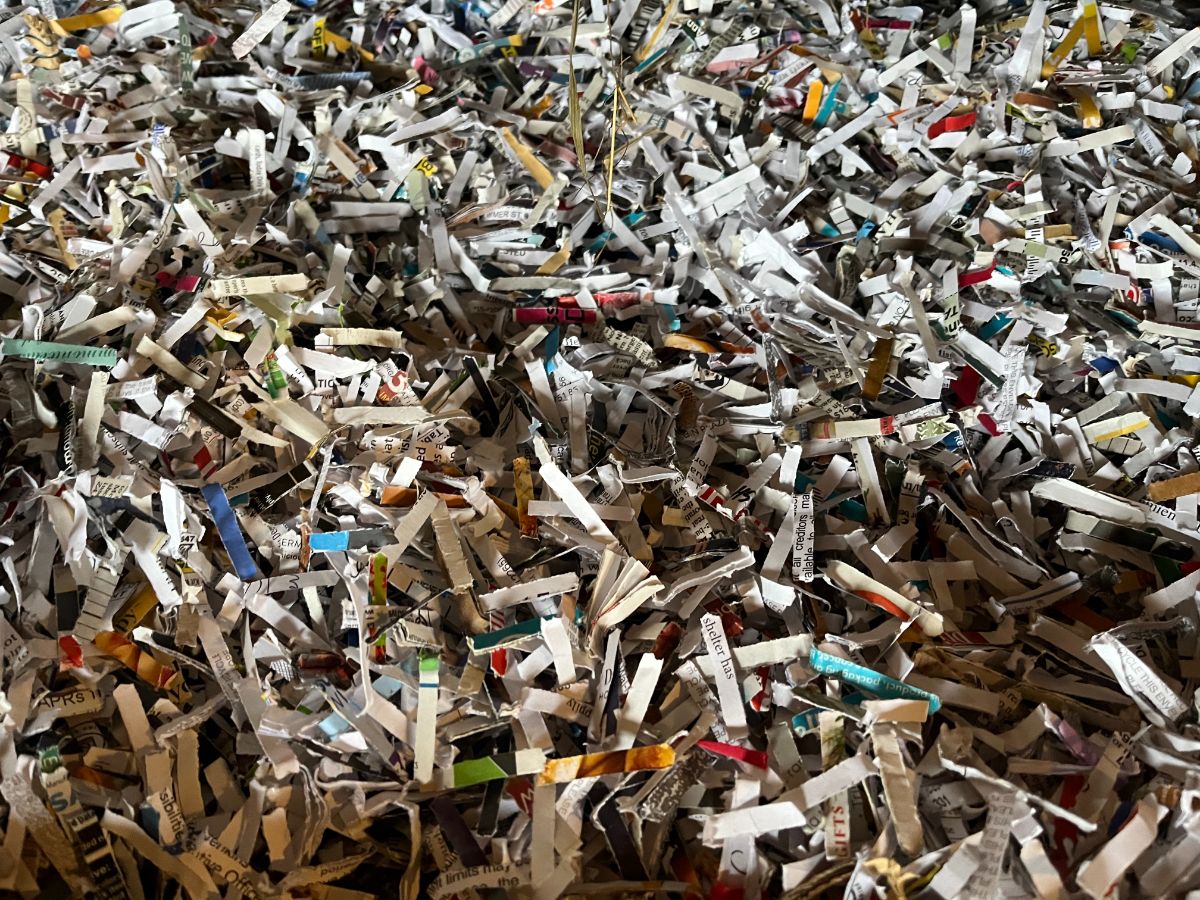
Paper and cardboard are good to add to the soil as amendments. The best way to add them is as shreds or as small, ripped pieces.
Shredded paper and cardboard mix more easily, won’t block seedlings, and break down into soil more quickly, which means they add to the organic matter more quickly.
You can work shredded paper in with hand tools or till it in with a garden tiller. Shredded paper will help lighten heavy soils and add “brown” carbons.
The increased humus created by composting paper will also help the soil retain more moisture, which means this is also useful in sandy or gravelly soils.
11. Use string and twine for tying plants and making bundles
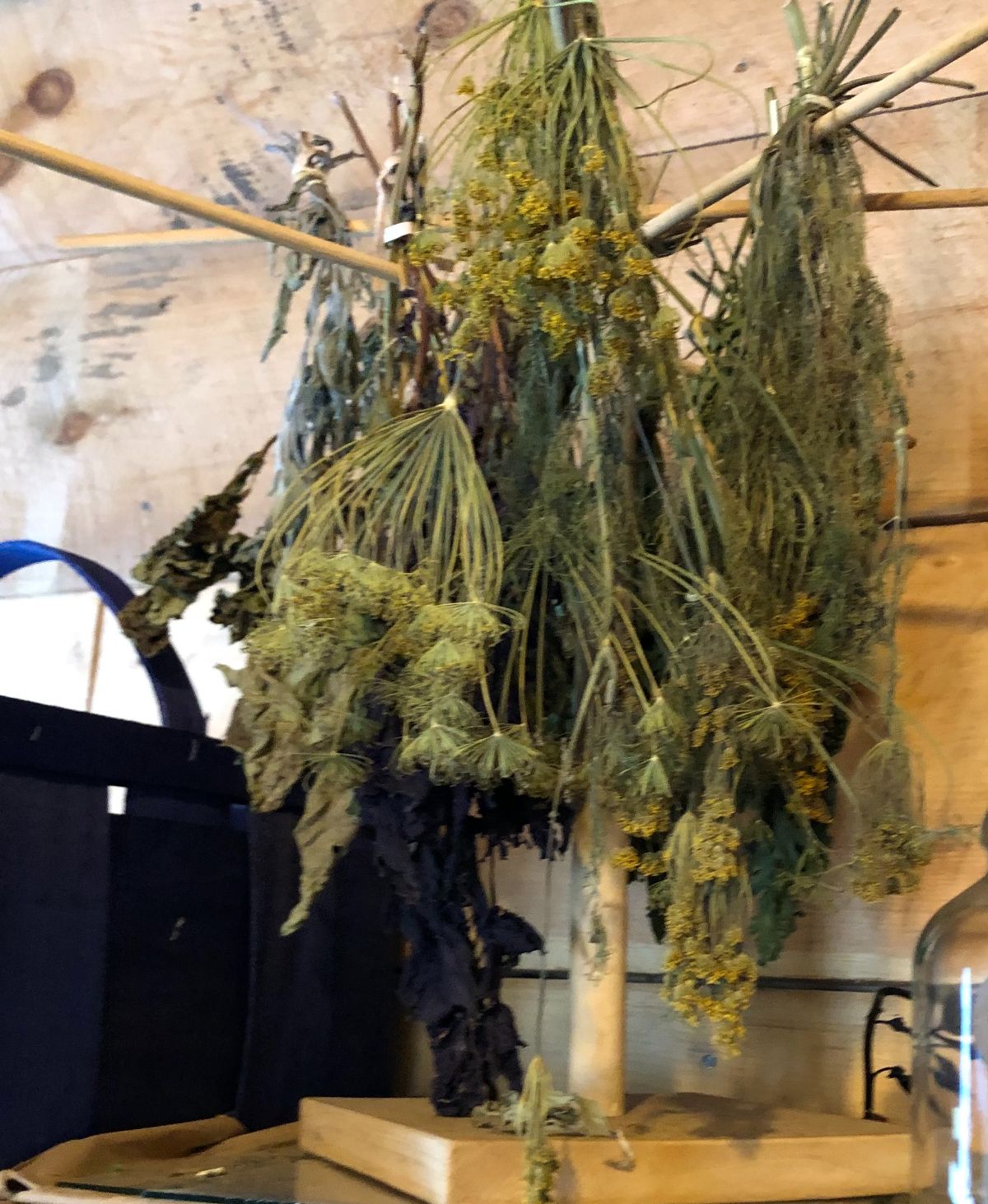
All that string and twine that was used to tie gifts can be up-cycled, too. Even ribbon can, but if it’s not made from a natural material, you’ll want to be sure all of it gets cleaned out of the garden at the end of the season.
Save leftover twine and ties for bundling produce, tying up tomatoes, or staking or tying plants and flowers that are prone to falling over.
You can also use it for hanging bundles of herbs for drying or for tying bundles of produce like garlic and onions when it comes time to cure them.
12. Line and fill raised beds
Raised garden beds are great, but when it comes time to fill them, things can get expensive.
Any space you can take up in your raised beds with organic materials that will break down and become soil is money saved on buying loam or soil.
Sheets of paper and sheets of cardboard can be used to line the bottoms of beds before you fill them. This will create a barrier and will stop weeds from coming up through your raised bed’s soil.
Ripped-up paper and shredded paper can be mixed in with soil to either lighten and amend it (as above) or to help make up bulk and take up space.
You can also use either a combination or a full lasagna garden method to fill up raised beds, in which your holiday paper, cardboard, and packaging can play a big part.
Double-Check Before Using Paper in Your Yard or Garden
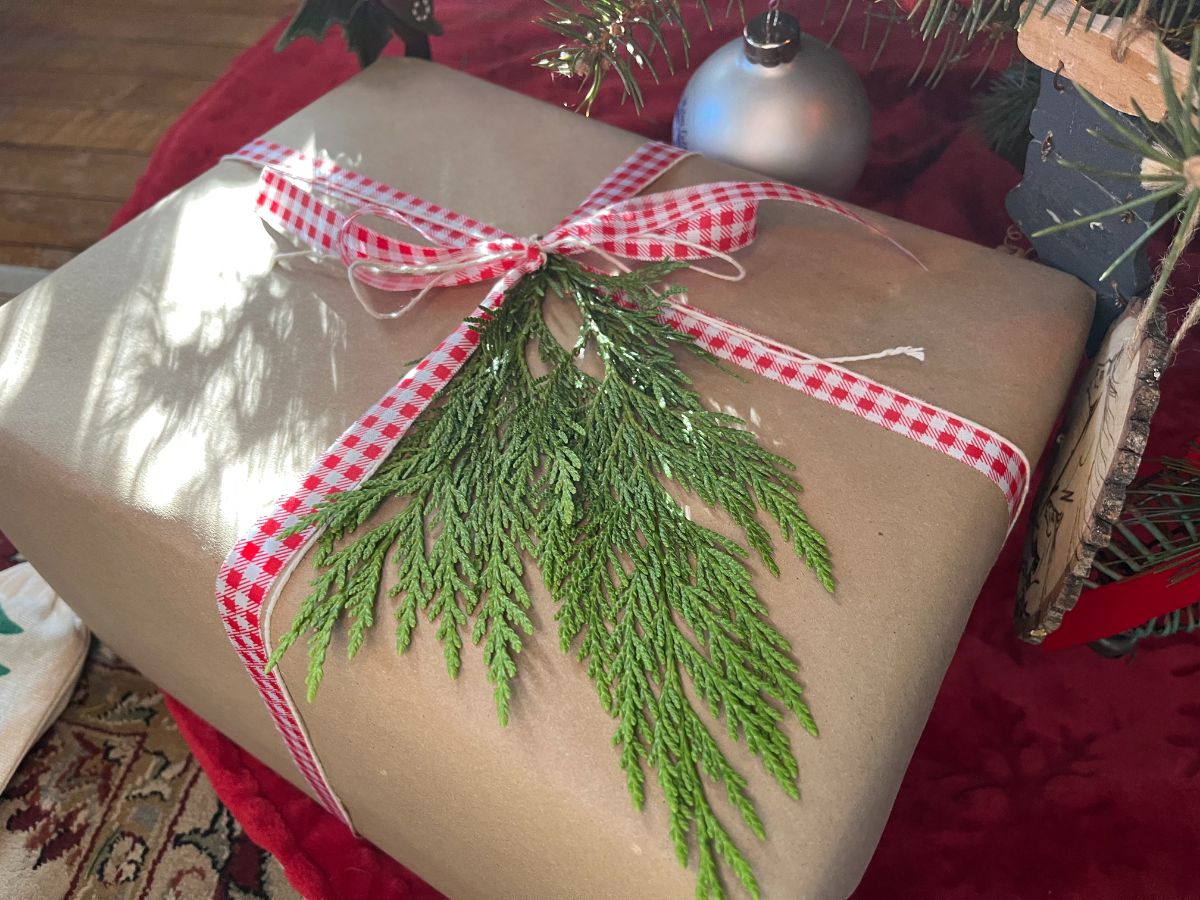
It can be difficult to know what cardboard, paper, and materials are safe to use in your yard, garden, and compost. The good news is most cardboard, newspaper, and even most wrapping paper are safe to use in all types of gardens (including food gardens).
You should take a little time to evaluate and sort the paper. Ideally, for all your own wrapping, you will have chosen a product that is stamped as recyclable. Do note, though, that there are some wrapping papers that are recyclable but not good to use in compost, the yard, or the garden.
Cornell University in New York State says that a good rule of thumb is that if the paper tears easily, it is likely fine to use in the garden.
There is also a “crumple test” that you can use to quickly decide if wrapping paper is recyclable and, therefore, likely good to use in the yard and garden. (This is a simple matter of crumpling and balling up the paper—if it stays in a ball, it’s good to go, but if it loosens and won't stay crumpled, it’s trash.) Find the crumple test here.
Here are some tips to help you figure out which papers you can compost or up-cycle for yard and garden projects, as well as a few that will help you choose better wrapping and packaging materials that are safe for garden reuse and that are overall greener and more eco-friendly:
- All papers with waxy coatings need to be thrown away (and not recycled)
- Metallic papers or foils are trash, not for reuse or recycling
- Papers with extremely bright colors (called Astro bright) cannot be recycled or reused
- Don’t compost or reuse papers with glitter (which is just small flecks of metal
- Most inks are okay for the compost pile if you avoid those listed above – they are vegetable-based and/or safe for the soil
- Brown papers and untreated papers like craft paper (aka Kraft paper) are compostable and usable in the garden. They are sold in large rolls and make great rustic wrapping, with many good garden uses after the fact.
- Newspaper is safe for garden uses. Avoid glossy sheets.
- The thin cardboard tubes that wrapping paper comes rolled on are great for garden use and compost piles (even if the paper that comes on them isn’t)
- Tissue paper is fine for soil and compost as long as it is not glittered or decorated with metallic features or foils
- Packing paper that comes in shipped boxes is good for garden uses
- Brown cardboard or printed cardboard that does not have glossy stickers as overlays are fine to use.
- Avoid boxes that are glossy or coated
- Remove tape and plasticky ribbons from wrapping paper or cardboard before using
- The smaller the pieces (i.e., shredded or ripped papers or cardboard), the faster they will compost and break down
- For sheet mulching, it’s better not to rip or tear down papers into small pieces
- You can use several sheets of paper for sheet mulching and weed control as needed
- Twine or strings made of natural fibers can be composted or reused in the garden
Any or all of these are great ways to put a lot of waste to work for you. It’s a much better and greener way to do no harm as we have our holidays and to help ourselves and our gardens at the same time!

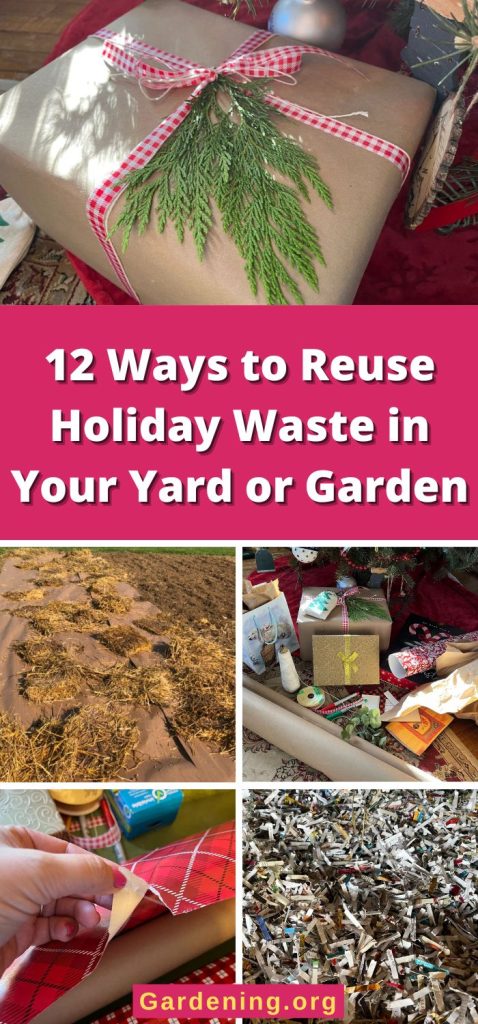
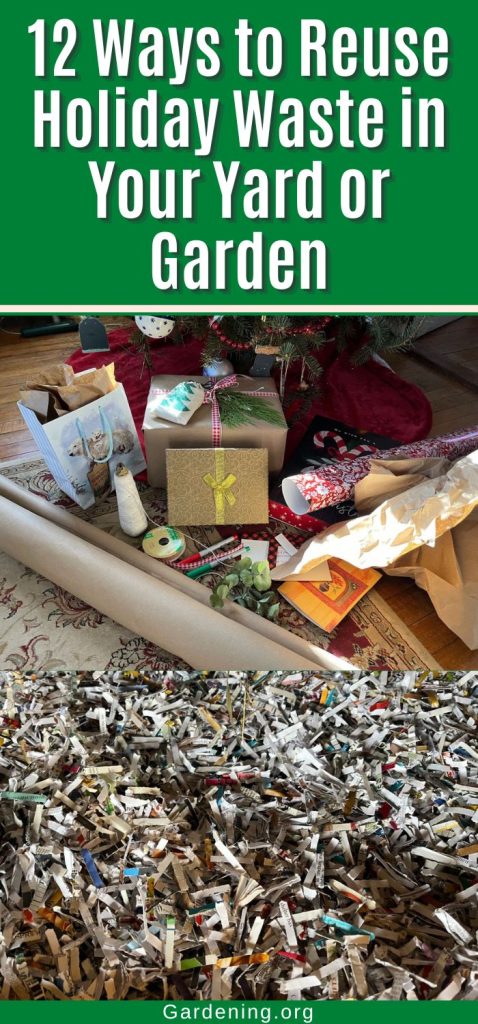
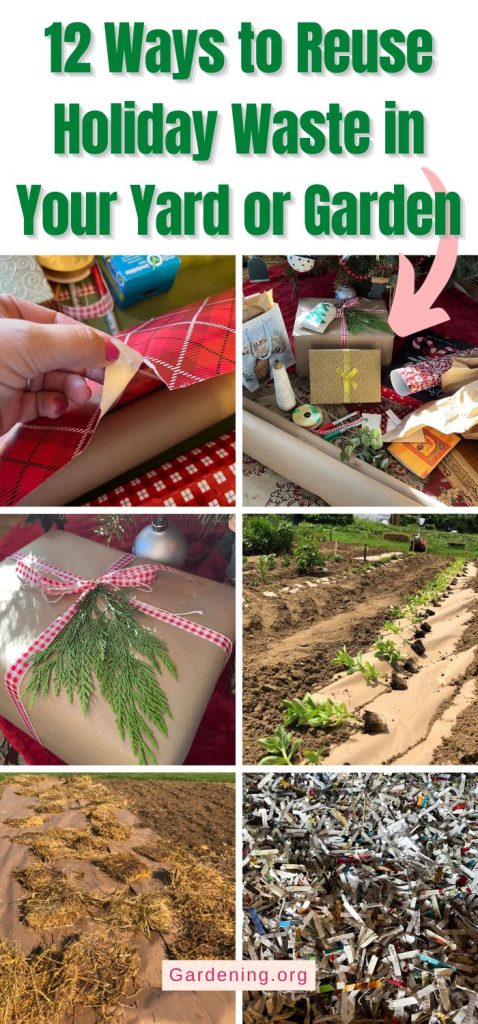
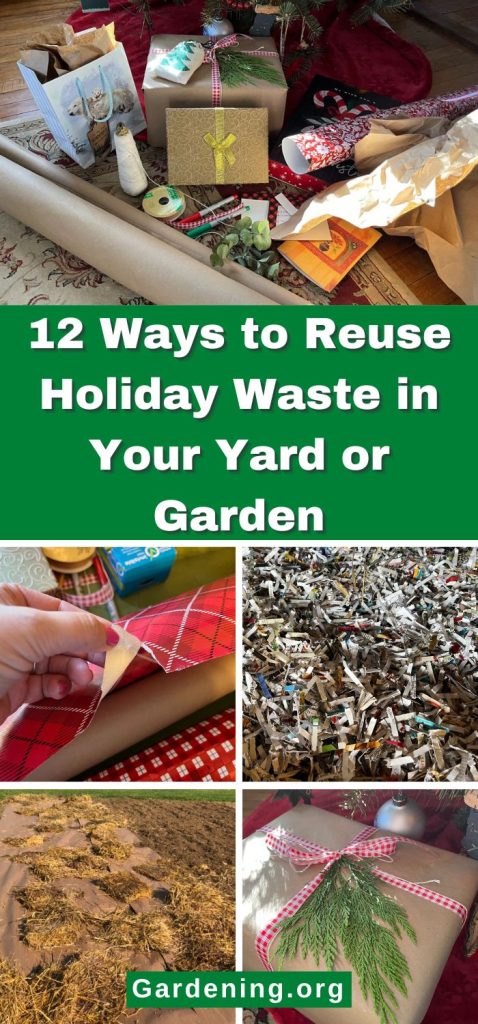




Leave a Reply